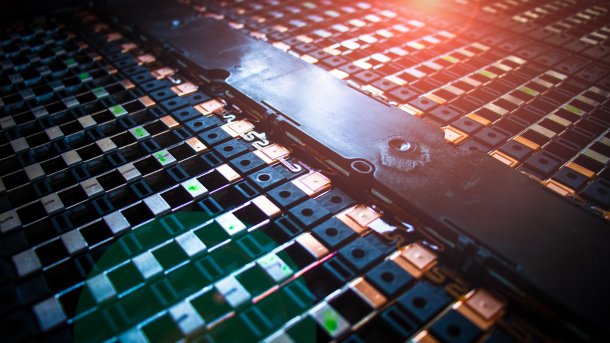ENTISE: Varta leads German research project for sodium-ion batteries
The German battery manufacturer Varta is leading the ENTISE project with 15 partners to develop promising, environmentally friendly sodium-ion batteries.

(Image: P5h / Shutterstock.com)
In the project "Development of sodium-ion technology for industrially scalable energy storage" ("Entwicklung der Natrium-Ionen-Technologie für industriell skalierbare Energiespeiche", ENTISE), a consortium of 15 companies and universities led by Varta aims to advance the development of sodium-ion batteries (NIB) as a cost-effective and environmentally friendly alternative to lithium-ion batteries. The Federal Ministry of Education and Research is funding the project with around 7.5 million euros. Fittingly, Federal Research Minister Bettina Stark-Watzinger handed over the funding decision on the same day as the opening of the first construction phase of the "battery cell research production facility".
The ENTISE consortium is pursuing the goal of developing cost-effective cell chemistry and converting it into industrially usable cell formats – specifically for electromobility and energy storage. The focus is on improving storage capacity and cycle stability through new materials and processes. A central component is the production of sufficient quantities of materials for laboratory samples and prototypes in round cell design. In the final phase of the project, a small series of round cells will be produced to enable evaluation in practical applications. ENTISE aims to present marketable sodium-ion cells on an industrial scale by mid-2027.
Why sodium ions?
The material required for production is widely available, easily degradable, easy to recycle and cheaper than the lithium ferrophosphate batteries (LFP) or nickel-manganese-cobalt cells (NMC) that are commonly used. They can also be charged more quickly and perform better at low temperatures. The costs per kilowatt-hour of energy content could also be 20 percent lower. The disadvantage, however, is the lower energy density and therefore the higher weight with the same energy content as corresponding LFP or NMC batteries. While NIB has an energy density of 120 to 140 Wh/kg, LFP is around 200 Wh/kg and NMC even over 300 Wh/kg.
A decisive factor for the breakthrough of NIB technology is also likely to be the further development of the amorphous carbon anode (hard carbon), which has previously resulted in high losses. CATL and BYD appear to have made progress here.
Chinese manufacturers one step ahead
While industrial research is still in its infancy in this country, Chinese manufacturers - such as the global market leader CATL - have already built factories for the industrial production of sodium-ion batteries and presented their first electric vehicles: The E10X small car from car manufacturer JAC, for example, is equipped with NIB batteries from the previously largely unknown manufacturer Hina. The world's largest electric car manufacturer BYD also uses NIB batteries in its BYD Seagull small car, which is available on the Chinese market for around 10,000 euros.
Potentially groundbreaking project for Varta
For Varta, the ENTISE project may come at just the right time and could be groundbreaking for the future: A cyberattack forced the German battery manufacturer to completely halt production in February, which pushed its shares further into the red. According to Varta, all five production sites and the administration were affected. For security reasons, the IT systems and therefore also production were "proactively and temporarily" shut down and disconnected from the internet.
In addition, the demand for lithium-ion button cells, which have long been responsible for the company's success, is declining and the production of traction batteries for electric cars is not really making progress. According to ZDF, the first competitive Varta products will be years away.
(vza)